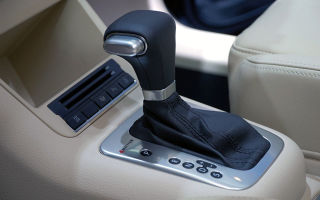How to control a robotic gearbox - DRIVE2
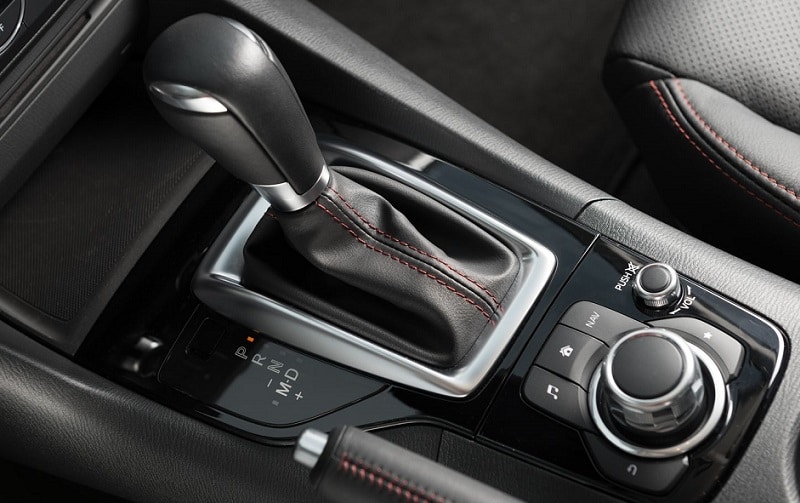

Modern cars use several types of gearboxes - manual, automatic, CVT. The manual transmission is distinguished by its reliability, but requires driving skills from the driver.
The automatic one is much easier to operate, but more “capricious” in technical terms. Recently, designers have released another type of gearbox - robotic. In it they tried to combine the reliability of a “mechanics” with the convenience of an “automatic”.
And they succeeded - more and more automakers are equipping their cars with a robotic gearbox. A little about the device: The essence of such a box is quite simple - there is a manual gearbox and an electronic control unit for it.
With a manual transmission, all the functions that a driver with a manual transmission had to perform (squeezing the clutch, moving the gearbox lever to the desired position) are performed by actuators - servos of the electronic unit.
Thanks to this, the reliability of the gearbox has increased due to the use of classical “mechanics” and the ease of use has increased.
The driver just needs to move the selector to the desired position (as in an automatic transmission) and enjoy the ride, and the electronic unit will take care of the gear shift.
With all this, many robotic boxes are also equipped with manual controls, which allows the driver to control the box independently, with the only difference - there is no need to squeeze the clutch. Control features: The manual transmission received some operating modes from the automatic transmission, namely:
"N" - neutral. A mode in which torque is not transmitted to the wheels from the gearbox. That is, the engine is running, rotation is transmitted to the box, but due to the position of the gears, it is not transmitted to the wheels.
Used when parking a car for a long time, before starting to move, after stopping;
"R" - reverse movement. Everything is simple here, the driver moves the selector to this position and the car moves backwards.
Other modes of the robotic box have their own designation:
"A/M" or "E/M" - forward movement. This mode corresponds to the “D” mode of an automatic transmission, that is, the car moves forward and the gearbox changes gears. In “M” mode manual control is performed.
By moving the selector to a certain groove, the required mode is selected; “+”, “-” - gear switch.
Short-term shifts of the selector to the “+” or “-” side ensure gear shifting in the “M” manual control mode.
Is it necessary to warm up the box?
It seems that everything is simple, and there is nothing complicated in controlling such a box - just move the selector to the desired position and start moving. Still, you should know how to control the robot box so that it works without problems.
Let's start with an interesting question - is it necessary to warm up the gearbox before driving in winter? For an automatic transmission in winter, warming up is mandatory and is performed by briefly moving the selector to all positions.
The robotic gearbox is essentially mechanical and does not require warming up. And yet, in winter, the manual transmission should be warmed up before driving, although this is not exactly warming up. When parked, the oil in the box flows down and thickens due to frost.
Therefore, it is recommended in winter, after starting the engine, to give time so that the oil does not warm up, but simply spreads over the elements of the box, reducing friction between them. It’s enough to just stand for a couple of minutes with the engine running, and you don’t need to switch the selector to different modes, just keep it in the “N” position.
After this, you need to start moving smoothly, without sudden jerks, and drive for at least 1 km, which will ensure complete heating of the oil. Starting the climb, overcoming it, descending
car movement up the mountain
Many cars with manual transmission are not equipped with a hill start assist system, so the driver himself needs to learn how to start driving correctly. When starting uphill, you must proceed with the robotic gearbox in the same way as with the “mechanics”.
To start driving, the selector is switched to mode “A”, the accelerator is smoothly pressed and at the same time the car is removed from the handbrake. This action will prevent the car from rolling back.
You should practice pressing the gas and releasing the handbrake at the same time so that the driver can feel the engine and understand when the clutch has started to engage and can be released from the handbrake.
When starting to climb in winter, it is better to use manual mode and set the car to first gear. It is not worth accelerating too much to avoid wheel slipping.
When driving uphill with the automatic mode selected, the box will begin to shift to lower gears on its own, which is quite logical, because at higher speeds it is easier to overcome the climb.
This gearbox is equipped with a gyroscope that determines the position of the car, and if the sensor shows a rise, the box will work accordingly. You can also move in manual mode by locking in a specific gear.
It is important to understand that the manual transmission will not allow you to move under tension, so when climbing, the engine speed should be at least 2500 rpm.
When descending, no action is required from the driver. It is enough to move the selector to position “A” and remove the handbrake. In this case, the car will perform engine braking. Stop, parking
And the third important issue is the correctness of parking and stopping. After the car has come to a complete stop, the selector must be moved to neutral “N”, put on the handbrake and then turn off the engine.
During short stops, moving the selector to neutral is not necessary; it is quite possible to remain in mode “A”. But it is worth considering that when stopping, the clutch remains depressed.
Therefore, in a traffic jam or at traffic lights, when the stop takes longer, you should still switch to neutral.
Other modes
These are the basic rules on how to operate a robotic box. But there are other features, for example, some manual transmissions have additional modes - sport and winter, the so-called “snowflake”.
“Snowflake” is aimed at starting movement on an icy road as smoothly and without slipping as possible. All it does is ensure that the car starts straight from second gear and makes upshifts smoother.
The “sport” mode switches to higher gears at higher speeds than in normal mode. This allows you to accelerate faster. That is, if in normal mode the transition to 2nd gear was performed, for example, at 2500 rpm, then in the “sport” mode this transition will be carried out at 3000 rpm.
Now about the possibility of switching from automatic to manual mode and back while driving. The robotic box allows you to do this without any problems. It is also possible to independently downshift or upshift to change the speed of movement. But it is worth considering that the electronic unit will not completely transfer control of the box; it will constantly monitor the operation.
Therefore, if the driver decides to shift, for example, down two gears, then the electronic unit will allow this to be done, but at the same time it will control the engine speed and if they do not correspond to the selected gear, the electronics will independently switch to an acceptable gear - the so-called “protection against fool."
Everything is simple here - the electronic unit is programmed so that each gear corresponds to a certain engine speed range. And if the manually selected gear corresponds to its range, the box will switch, and if not, it will switch on the required speed.
Useful tips
Finally, some recommendations for the operation and maintenance of the robotic box.
This gearbox does not tolerate sudden pressure on the gas pedal, so it is better to drive in a quiet mode. Even if you need to speed up, it’s better to press the accelerator smoothly, while switching to manual mode. And when braking, you should do the opposite - switch to automatic mode.
A feature of manual transmission is the presence of small shocks when changing gears. You can get rid of them quite simply - when changing gears, reduce the engine speed, that is, act by analogy with a conventional manual transmission.
The presence of a manual mode even allows you to perform a “rocking” exit if the car gets stuck in a snowdrift. But at the same time, this will not benefit the gearbox, since slipping on a manual transmission is not recommended, this can lead to decalibration of the actuators. Therefore, it is still better to remove a stuck car with outside help.
During each maintenance, it is necessary to initialize and diagnose the condition of the manual transmission, which will allow you to eliminate all faults of the box at an early stage.
There are other small features of such boxes that depend on the manufacturer. It is better to inquire about them immediately, so that in the future there are no misunderstandings with the operation of the robotic box.
Source: https://www.drive2.ru/b/485506677626372200/
How to learn to ride a robot?
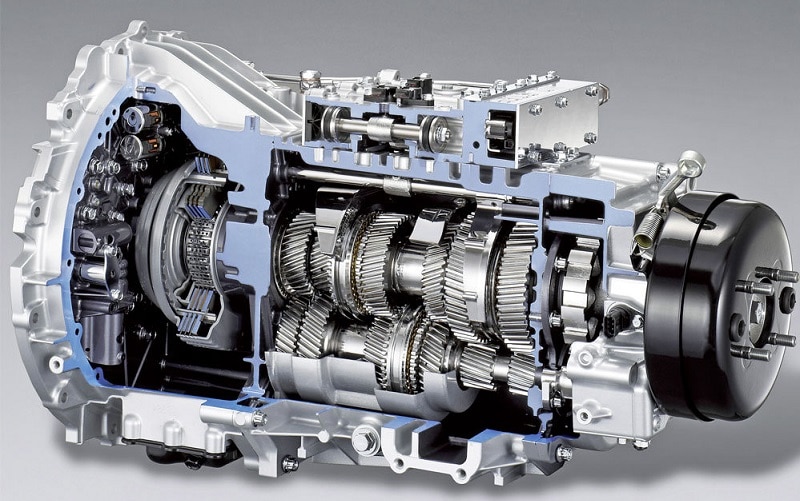
In progressive vehicle models, various forms of gearboxes are installed. The most common options are: mechanical, automatic, CVT. A manual transmission is characterized by a high degree of reliability; on the other hand, it requires a person to have good machine control skills.
The second option is much easier to use, but a little “capricious” in technical terms. As you can see, the characteristics of both types include unique features: pros and cons. It is for this reason that the designers created another gearbox, which has significant differences from other varieties.
The robot box is increasingly used when equipping cars.
Robotic gearbox: features and benefits of driving
This variety is not so complicated when it comes to its structure. The structure includes a mechanical box and an electronic unit designed for control.
The finished product has a full range of functions previously performed by a manual motorist. This includes, in particular: moving the lever to a certain position, squeezing the clutch, and so on.
The expanded functionality is partly due to the presence of actuators, that is, servos that are located inside the unit.
Structure of a robotic box
The main advantages of the new development include reliability and ease of use. A person driving a car with a robot just needs to move the selector to the desired position and enjoy driving.
The electronic unit takes care of ensuring that gear shifts are carried out correctly. I would like to note that most robotic boxes are equipped with manual controls, which gives the driver the opportunity to drive the box and control the car independently.
There is only one difference, which is the absence of pressing the clutch.
How to drive a robotic gearbox?
Some of the robot’s operating formats differ when compared with an automatic model. The list of unique operating modes includes:
- “N” is a neutral option, during which the motor continues to function, rotation is transmitted to the equipment, but it does not go to the wheels, which is explained by the location of the gears. The mode is more relevant to use when parking for a long time, as well as before the start and after the car has stopped.
- "R" - move backward. In order to enter this mode, the car enthusiast must move the selector to a given position, due to which the car begins to move backward.
- "A/M" (sometimes called "E/M") - forward movement. This mode is the same as mode “D”, which is found in all automatic transmissions. When using it, the car moves forward, and the gearbox itself performs the shift. When the “M” mode is activated, control is carried out manually. By moving the selector to a certain position, the user selects the mode that he needs at a given time.
- “+”, “-” - designed to change gears. Briefly moving the selector to the plus or minus side can ensure gear shifting when selecting the control mode manually.
- Heating requirement
Do you need to warm up your car in winter?
How to control a robotic gearbox? First you need to decide whether there is a need to warm up the box before using it in winter.
If you use an automatic device, then you know that in cold weather you cannot do without pre-warming, which is done by briefly moving the selector to all existing positions.
Driving a car with a robotic gearbox does not require additional manipulations, even if the temperature outside is sub-zero.
However, in winter the gearbox should still be prepared for upcoming use.
The fact is that while the car is standing, the oil inside the device flows down and, due to low temperatures, its consistency changes: the substance becomes much thicker.
For this reason, in the cold season, it is recommended to start the engine and wait some time for the oil to warm up and distribute throughout all the elements that make up the box. This will reduce friction and reduce wear on parts in contact with each other. For the process to be successful, you need to wait two minutes and start the engine.
Then you can smoothly, trying not to make sudden jerks, move for a kilometer, which will contribute to optimal heating of the oil fluid.
Features of driving with a robotic gearbox
Most of the cars equipped with the most advanced models of gearboxes are not equipped with a start assist system for lifting, and therefore experts recommend starting the movement yourself.
In such a situation, you need to act as in the case of a mechanized gearbox, that is, the selector should be switched to mode “A”, and then press the accelerator, while simultaneously removing the car from the handbrake. This will eliminate the possibility that the vehicle will start to roll back.
It is worth practicing in advance in performing these actions in order to learn how to control, feel the engine and immediately recognize the moment when the clutch has already engaged and you need to remove the car from the handbrake.
Have you used a car in winter? In this case, you know that in order to use the manual mode by setting the first gear, it is not recommended to accelerate hard, otherwise there is some risk that the wheels will start to slip.
When driving uphill in a certain mode selected automatically, the device shifts into lower gears without human assistance, which can be explained from a logical point of view: if the speed is too high, it is much easier to overcome the climb. The manual transmission is equipped with a gyroscope that determines the location of the car in space.
If the indicator shows a rise, the device begins to work adequately to the situation. It is possible to move in manual mode; to do this, you need to lock the selected gear.
We must not forget that the gearbox does not allow tight movement, and therefore when climbing, the engine speed changes and is at least 2500 rpm.
How to stop?
The issue of stopping and parking is also important for drivers. It is very important to know how to drive correctly so that your car will serve you well for a long time. After the car has completely stopped, you need to move the selector lever to “N” mode, set the standing brake, and turn off the engine.
During short stops, moving the lever to the specified mode is not necessary. It is allowed to remain in mode “A”, but we must not forget that during a stop the clutch remains depressed.
Therefore, when standing at a traffic light or in a traffic jam, if the delay lasts for an indefinite period, you need to switch to neutral mode.
What other modes exist?
Listed above are the basic rules that should be followed when driving a car with a robotic gearbox. However, there are other features that you should be aware of.
For example, some products offer auxiliary modes other than those listed above. These are such types of gears as: sports and winter (it is also called “snowflake”).
The last of the presented modes is needed in order to safely navigate along an ice-covered track. It provides a smooth transition to higher speeds.
Source: https://prokpp.ru/pro-korobku-peredach/korobka-robot.html
How to ride a robot and how to use it correctly
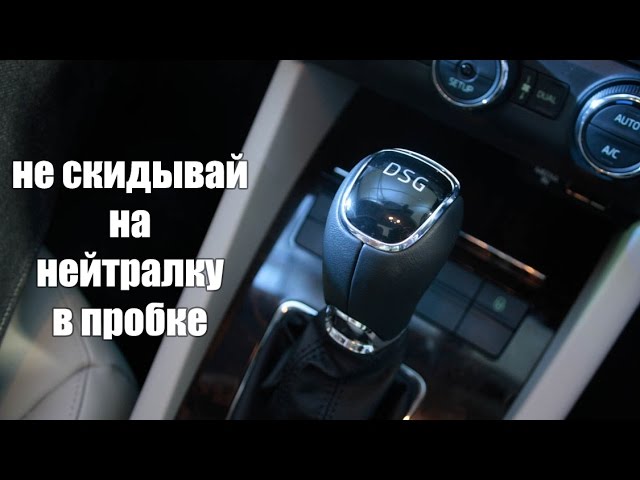
Car enthusiasts who decide to buy a car with a robotic gearbox often wonder how to drive with such a system? In this article we will look at how to use the robot box.
An automatic robotic gearbox, commonly referred to as a robotic gearbox, is a conventional manual transmission that includes a compact electronic unit, electronic clutch control and automated gear shifting. The robot box combines reliability, comfort and fuel efficiency.
Today, almost all automakers equip their cars with such boxes, each of them has its own unique design and patented name. What’s most interesting is that the “robot” is cheaper than a classic automatic transmission.
Robotic gearbox
About the device
One of the branches of development of mechanical transmissions led to the creation of a robotic gearbox, which combined the reliability of a “mechanics” with the convenience of an “automatic”.
Due to the fact that all the driver’s work began to be performed by actuators - servos of the unit, the characteristics increased. Now the electronic unit takes care of gear shifting itself.
All a person needs to do is set the selector to the desired position, like in a gearbox, and enjoy the ride.
There are robots with manual gear shift mode. For example, a 2-Tronic box can serve in three modes. The first is automatic, when a person does not touch the gears at all.
The second is semi-mechanical, in case the driver wants to control the clutch independently, for example, when overtaking another car and at the same time is in automatic mode.
The third mode is completely manual, where everything depends only on the driver.
As for those who like to drive fast, a cam robotic gearbox is just right for them. It is the fastest of all types of robotic boxes; you can switch speeds in 0.15 seconds.
Cars with such a box contain a clutch pedal, but it is used only when the vehicle starts moving. Further, shifting occurs as in a sports motorcycle - without using the clutch.
Preselective gearbox
Manual transmissions can have an electric or hydraulic clutch drive. In the first version, the “organs” are servomechanisms (electric motors). As for hydraulic, everything here is based on hydraulic cylinders.
Automakers such as Peugeot, Fiat, Renault, BMW, Volkswagen, Citroen and others equip their robotic gearboxes with a hydraulic drive. As for the electric drive, the following companies are working with it: Ford, Opel, Nissan, Toyota, Mitsubishi.
Other Korean manufacturing companies have not yet decided to introduce robots due to the complexity of design and maintenance.
Operating principle of a robotic gearbox
Manual transmission has the same operating principle as a manual transmission. It has the same three shafts: driven, intermediate and driving, the same gears and gear ratios. As mentioned above, robots are controlled by servos, otherwise known as actuators.
These devices engage and disengage the shaft gears, and also connect and disconnect the box with the engine flywheel. Control over the process was taken over by an electronic unit that sends commands to a hydraulic drive or electric motor.
Based on the input sensor signals, the block generates a control algorithm that depends on external conditions, and implements it through actuators. All the driver can do is use the paddle selector to change gears.
Automatic transmission with torque converter
Robotic dual-clutch gearboxes
Since in the first robotic gearboxes the clutch shift time is slow (up to 2 s), leading to freezes and shocks in the dynamics, it was decided to eliminate the problem by creating a dual-clutch robotic gearbox that transfers speeds without interrupting the power flow. The technology originated in the late 80s of the last century. The point is that the two clutches work alternately, and not both at once. Together with the double clutch, the preselective gearboxes contain two more input shafts.
Source: http://ktonaavto.ru/avto-faq/prava-i-vozhdenie/kak-ezdit-na-robote-i-kak-pravilno-polzovatsya.html
How to ride a robot correctly
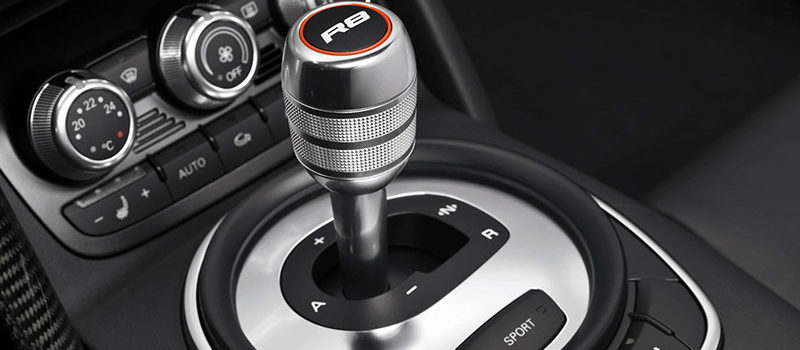
There is an opinion among car enthusiasts that a “robot” is a finicky, unreliable and complex thing. They are partly right, but let’s not lump all robotic transmissions and all owners with the same brush, and let’s figure out how to properly drive this or that “robot” in order to extend its life.
What is a "robot"
Considering that our topic today relates more to driving, we will not dive into technically complex terminology and deal with the problems of “robots”.
If you are an ordinary person who intentionally or accidentally bought a car with a manual transmission (for example, the seller of a Ford Focus 3 deceived him by saying that it had an automatic transmission), then it will be enough for you to know that the “robot” is the same manual transmission, here only squeezes the clutch and switches the speeds of a set of electric motors. All this is managed by a separate control unit, which replaces the driver’s brains, independently reading heaps of information from many sensors.
“Robots” with two clutches (preselective gearboxes) are a little out of this definition, since in addition to an additional set of clutches they have another shaft with gears to separate even and odd gears. Moreover, some varieties of DSG are equipped with wet clutches and their design is more reminiscent of an automatic transmission, but not the essence.
Robots with “wet” clutches behave much better, but the gearbox does not mate with all engines
Perhaps very soon engineers will bring these transmissions to perfection, but in the meantime, owners who switched from an “automatic” due to imperfections in the design and control program of the manual transmission are experiencing difficulties with reliability, repair and maintenance. It is useless to expect valuable information from dealers - it is beneficial for them that you come to them to repair or replace the unit. So, pay attention to the information on how to ride a robot correctly.
Imagine that you are on the “mechanics”
Here's some information to get you started. Even the “sick” heavy Opel Zafira with all the EasyTronic actuators drives 200 thousand km without problems for some owners. Do you know why? Because the determining factor in extending the life of a “robot” is the driving style.
Everyone is used to perceiving the absence of a clutch pedal as an “automatic” and drives it, not caring at all about when the shift occurs and into what gear, and in order to drive a “robot” correctly, you will have to monitor the moment of changing gears in order to at this time, slightly release the gas pedal. Yes, yes, like on mechanics.
In this way, you protect the clutch from excess load, and the gear change itself will be smooth, without shocks, especially for single-disc AMTs.
On preselective transmissions (DSG, PowerShift), while they are new, you can’t always track the moment of shifting - two sets of clutches allow you to do this almost imperceptibly, so the only sure way to “guess” the gear change is to engage the gear in manual mode and... That’s right - slightly release the gas pedal .
Don't drive
The essence of this paragraph is the simplest and most effective. If you do not have a Porsche with a PDK gearbox, then the main rule for saving the resource of a manual transmission is driving without racing. Just become a less aggressive driver or don’t buy a car with a robotic transmission at all – it will be cheaper.
Adapt and update
If you want the “robot” to be flexible and unpretentious, you will have to do it once every 20 thousand km. go to the adaptation of clutches and mechatronics, since as the clutches wear out, the engagement point shifts and the “brains” should be notified about this.
After these procedures, shifts will be smoother, which will undoubtedly extend the life of both the clutch and gear changing mechanism. If you go to the dealer for adaptation, do not hesitate to ask about new firmware versions for your gearbox, especially if it is DSG or Powershift.
New management programs are more advanced and lean.
A big plus of robotic transmissions with dry clutches is the ability to diagnose the remaining life of the clutches
Change the oil
In the case of “dry” boxes, this rule can be neglected. But “robots” with clutches in an oil bath do not last long without timely replacement of lubricant. But those who take care of the gearbox properly receive a completely reliable unit, in no way inferior in reliability to most hydromechanical automatic transmissions.
Bottom line
Of course, all these methods will not 100% protect you from troubles with robotic transmissions, especially if the “robot” has a dry clutch(s), but you can push back the threshold of excessive wear for a very decent period. If experienced racers manage to finish off the DSG-7 (DQ250) by 50 thousand km, then the calm, measured grandfather has enough resource for 120 thousand km or more.
Of course, it’s a shame that the owners themselves have to pay for the imperfections of new products from automakers, and the cost of repairing a manual transmission sometimes reaches significant amounts compared to the cost of the entire car. However, as you already understand, not everything is so bad and with proper care the machine will not suck money out of you. Happy operation!
Source: http://stop-autohlam.ru/kak-pravilno-ezdit-na-robote/
Robotic gearbox: operating principle, differences, driving
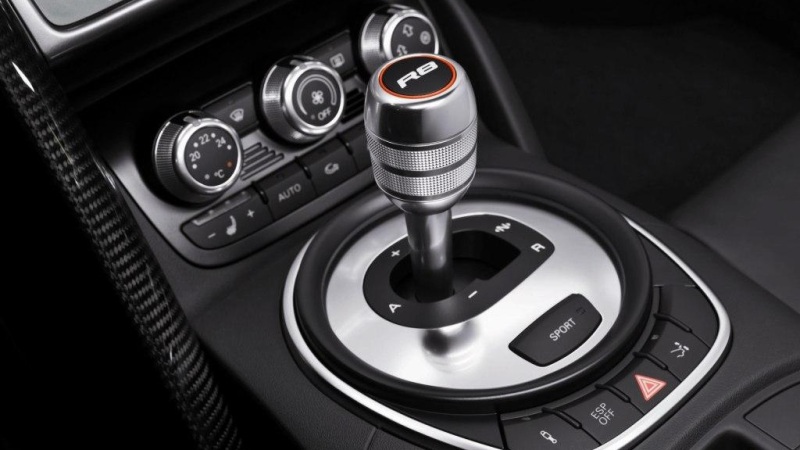
Many people believe, and by the way, quite rightly, that progress is driven by nothing more than ordinary human laziness. That is why many automotive engineers are trying to make life easier for car enthusiasts and want to see in the car interior not three pedals, as usual, but only two - the brake and gas pedals.
Operating principle of a robotic gearbox
Robotic gearbox as an improvement to “mechanics” and an alternative to “automatic”
It's simple, it's a regular manual gearbox, albeit supplemented with several auxiliary systems. These systems are responsible for the operation of the clutch (turning it on and off), and also sequentially shifting gears up or down, while selecting it correctly.
Even the operating principle of robotic gearboxes is the same as that of a manual gearbox.
But, of course, there are differences, the most important of which is the presence of actuators, that is, the clutch operation in the robotic box is entrusted to servos.
The actuators are controlled by an electronic unit and driven by a compact electric motor. So, for example, when operating a robot manually, the driver engages first gear before starting to move.
The electronic unit recognizes the command and at the same time the first servo drive depresses the clutch, and the second at this time moves the desired synchronizer and locks the first gear.
Diagram of operation of a robotic gearbox
Next, the servo begins to smoothly release the clutch. Subsequent transmissions are activated in a similar way. However, if the driver switches to automatic gearshift mode, the actions will change slightly.
The command to change gears will come from the computer, which will also take into account the speed of movement, engine speed, and will not ignore the readings of the ABS and ESP systems.
In this case, the driver will be an extra, that is, his task will be to operate the pedals, and the electronics and the gearbox actuator will do the grunt work. Reviews of robotic boxes show two distinct poles:
Of course, manufacturers are struggling with this and are trying to replace two actuators with one electromagnetic one, here they “kill two birds with one stone” - the overall dimensions and weight have been reduced, but most importantly, the gear engagement time has been reduced by as much as eight times.
It is also necessary to note such an innovation as the appearance of robotic gearboxes with two clutches. These boxes are characterized by high speed, durability, and they are the ones that have the future.
Note that drivers are accustomed to this type of transmission and lower the engine speed themselves before shifting, and, of course, aggressive driving is not encouraged by such drivers.
“Automatic” replaced the manual transmission in the mid-fifties of the last century. The popularity of the automatic transmission is understandable, because compared to a robotic gearbox, shifts occur smoothly, without interruption in the power flow between the engine and the wheels.
But accordingly, there is a major disadvantage - it is a large mass. The weight has increased due to the fact that the gears in the automatic transmission have been replaced by planetary gears, the hydraulic system has been added, and the clutch is now represented by a torque converter. Nowadays, automatic transmissions with eight gear levels are not uncommon.
But it is true, it is worth noting that the efficiency of the “automatic” is worse than that of the “mechanics”.
Video: DSG robotic gearbox
“CVTs” are interesting in their design because they have no gears at all. The most common is the V-belt design. That is, the design has two pulleys, one of which is connected to the engine, and the other to the transmission. The belt or chain drives the engine's torque. Of course, there are also disadvantages.
The engine efficiency is greatly reduced by the presence of a fluid coupling. It is clear that when choosing the type of transmission, the purely subjective opinion of the car enthusiast will be taken into account. If you have to push around in traffic jams, pay attention to an “automatic” or “variator”; if you often drive off the asphalt, a manual is preferable.
But the best way to learn to drive a car is with a manual transmission; here you can feel the engine and the behavior of the car better.
To summarize the above, we note that a robotic gearbox is a manual gearbox with automated control.
The most famous robotic box designs are:
- DSG (Direct Shift Gearbox);
- SMG (Sequential M Gearbox);
- Easytronic.
How to ride a robot box
Features of controlling the robot box
To enjoy driving a car with a robotic gearbox, you need to remember a number of recommendations:
- Help change gears (by lowering the engine speed before shifting);
- Do not press the gas pedal sharply (the protection will work and neutral will turn on);
- When climbing a long mountain, switch to manual control (there will be no cyclic switching);
- Accelerate smoothly (shocks when switching will decrease);
- You cannot drive for a very long time at a slow pace or uphill (the clutch will overheat if it constantly slips);
- Drive in modes in which the clutch is fully engaged.
Pros and cons of robotic gearboxes.)
Video: New robotic gearbox
There are many positive aspects of this unit that can be collected and we use reviews from ordinary owners of “robots”. The design of the box is essentially the same mechanics, which means it is more reliable than that of an automatic or CVT.
Pros of the robot box
- With smaller volumes, it requires correspondingly less oil (3 liters), for a classic automatic machine - about 6-8 liters;
- This type of transmission has high maintainability; any service has studied the design of the box thoroughly;
- The clutch has a service life of 30-40% more than other types of boxes;
- Almost all robotic gearboxes have a manual gear shift mode, that is, you can drive the car almost like a mechanic;
- And the most important advantage can be considered efficiency, fuel consumption is approximately the same as with a manual car.
Disadvantages of the robot box
- The most annoying thing here is that many robots are not programmable. That is, in order to change the firmware of some boxes, you will have to change the entire box control unit;
- The thoughtfulness of the robotic box also haunts the driver; he has to calculate every moment of changing lanes to the smallest detail and switch to a lower gear in advance;
- It is not uncommon to experience annoying jerks when shifting gears while moving or when starting from a stop; this can only be cured by flashing or replacing the control unit.
But you can get used to everything, and, of course, you can easily adapt to the “robot”.
In conclusion, I would like to say: there is no need to be afraid of robotic boxes. According to the owners' reviews, they are not that scary and do not cause much trouble to maintain. Therefore, when choosing the type of transmission, listen to yourself, and if it’s yours, take it and have fun.
Source: http://AvtoMotoProf.ru/v-pomoshh-avtomobilistu/robotizirovannaya-korobka-peredach/
Features of robotic “mechanics” – Avtotsentr.ua
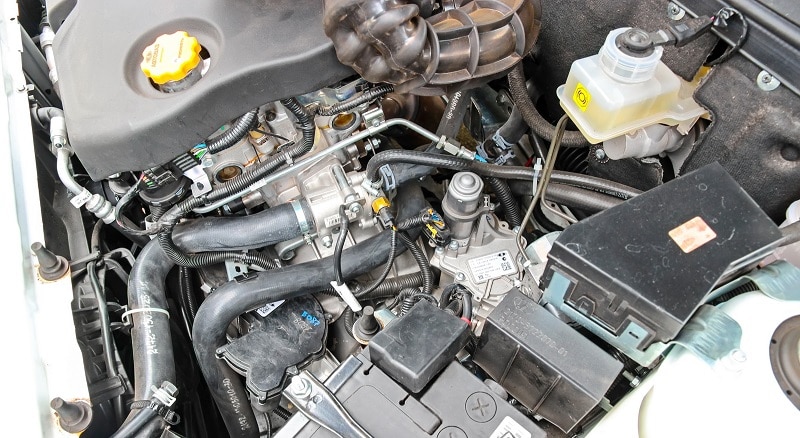
Useful tips
|
Robotic manual transmissions differ from conventional ones in the presence of an electronic control unit.
Using electric or hydraulic drives, it disengages and engages the clutch, and also selects the desired gear depending on the degree of pressure on the gas pedal (engine load) and vehicle speed (speed of rotation of the secondary shaft of the gearbox).
This design does not have a torque converter, so fuel consumption is less than that of a classic “automatic”, and often even than that of cars with conventional mechanics (the computer selects more optimal gear shift points). But in terms of smoothness and speed of switching, the “robot” is often inferior to a conventional automatic machine.
The behavior of “robots” in different cars (especially if they are from different classes) is significantly different. Key Features:
| gear shifting may occur with delays; |
| unpleasant shocks are felt (the car accelerates, then the clutch disengages, after a while the next gear is engaged and acceleration continues, but since the gas remains pressed, the car jerks); |
| when driving in a traffic jam on some cars you can “burn” the clutch; |
| When starting on a hill, the car rolls back a little, so you can only start driving with the handbrake. Some “robots” constantly shift gears up and down when going uphill; |
| in some situations, the electronic “brain” has to help by releasing the gas when switching and not using maximum acceleration efficiency. Sometimes it's easier to switch to manual mode. |
There are certain features of stopping and starting the engine. For example, you drive up to your house and turn off the engine, leaving the shift lever in gear. Now, to start the engine, you need to press the brake pedal, turn on the ignition and move the lever to the neutral position.
While the gear is engaged, the engine will not start, and if the ignition is turned off, the box will not respond to movements of the lever. However, manufacturers of robotic gearboxes are constantly improving their design.
For example, the hill start assist function and the slow motion mode in traffic jams are already quite common.
In the new VW DSG gearbox, torque is transmitted without interrupting the engine-wheel connection. In it, two clutches operate in parallel. When changing stages, one is turned off and the other is turned on. This happens almost simultaneously. This scheme of their operation eliminates jerks when switching and significantly reduces the time of this operation.
Prepared by Sergey Ivanov and Alexander Landar
Source: https://www.autocentre.ua/opyt/poleznye-sovety/osobennosti-robotizirovannoy-mekhaniki-285290.html
Robot gearbox: what is it? Advantages and disadvantages :
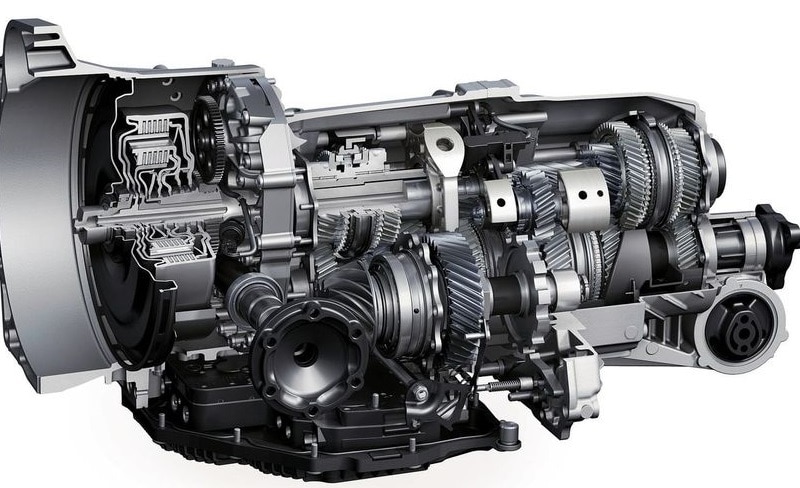
There are several automobile transmissions in the world. The most popular are manual transmission and automatic. At the moment, many popular manufacturers have begun to use a robotic version in their new products. In the article we will look at what it is - a robotic gearbox, what reviews it receives and whether it has advantages and disadvantages.
Box characteristics
The robot's gearbox is essentially mechanical, it just has an additional automatic clutch and gear shift built into it. Accordingly, the operation of the transmission is completely dependent not on the driver, as in other options, but on the electronic controlled unit. The driver only needs to correctly transmit incoming information for the transmission to operate correctly.
Device
We will look at which gearbox is better, automatic or robot, a little later; first we need to know the device of the new invention. The automated gearbox received a friction type clutch. This is a package of disks, or a built-in separate mechanism.
The most reliable and durable design can be called the one that has a double clutch. Volkswagen Golf became the first car in the world to be equipped with a robotic gearbox.
Reviews about the operation of the device were quite good, everyone noted a good response from the electronics, as well as ideal functionality during overclocking. At the same time, the power flow was not interrupted. This is achieved by using a double clutch.
In this case, switching speeds takes no more than 1 second. When working on Russian roads, unfortunately, the service life of such a gearbox is reduced by at least half.
Peculiarities
The clutch drive can be electric or hydraulic. In the first case, it should be noted that there is an electric motor and a mechanical transmission. The second type of drive operates through the operation of special cylinders, which are controlled by an electromagnetic valve.
In some cases, the robotic gearbox, the variator of which is well designed, is equipped with an electric motor. It moves the cylinders and is also designed to maintain the operation of the hydromechanical unit.
A similar device that has a drive of this type is distinguished by the duration of the gear shift speed. As a rule, it varies from 0.3 to 0.5 seconds. However, when compared with hydraulic analogues, the system will not need to constantly maintain a certain pressure.
A striking example of such a car is the Opel; the robotic gearbox on this car generally pleases many drivers.
Hydraulic gearboxes have a fast cycle, which provides gear changes in a time of 0.05 to 0.06 seconds.
That is why such a transmission is most often used on racing cars and supercars. Examples are Ferrari and Lamborghini.
On cars that belong to the budget class, such a gearbox cannot be supplied to a service station, even as an additional option.
How does a checkpoint robot work?
Most of the mechanisms are regulated by special intelligent robot gearbox units. What it is? Thanks to this, that is, the operation of the electronic system, it is possible to monitor all the necessary parameters for the gearbox.
The sensors also analyze the position of the transmission, oil pressure and other parameters for transmission to the main unit. After this, the electronics will generate all the necessary actions that should be performed.
In the form of short signals, they will be sent to the electric drive and electric valves, respectively, this will allow the gearbox to quickly but smoothly shift.
Operating modes
The design of the automatic variator and the robotic gearbox remains unclear to many. This device works on mechanical principles. However, if the user wishes, it can be switched to automation. After a person switches to the appropriate mode, the electronic unit will be blocked. The latter will begin to analyze the algorithm itself.
The driver only needs to press the gas pedal and monitor what is happening on the road. Quite often in traffic jams, judging by the reviews, the robotic gearbox becomes indispensable. If the mode is manual, the driver will be allowed to independently change gears from low to high, and vice versa.
Control can be carried out using a conventional gear lever.
Relevance of the box in Russia
Unfortunately, domestic manufacturers practically do not use robotic gearboxes to create cars. Many drivers don’t know what it is.
However, in 2015 it was announced that VAZ cars belonging to the Priora series would be equipped with a robot. This box weighs about 35 kg, and it is fully adapted to Russian roads and weather conditions.
For example, if the old automatic transmission did not make it possible to start the car at temperatures below 25 degrees, then the robot can show good performance even if this mark drops to -40.
The warranty period for the robotic box is 3 years, but the manufacturer stated that the average service life is 10 years. This is how the company wanted to achieve a return to popularity for the Priora series cars.
Advantages
The robot gearbox has received very good reviews. Let's consider its main advantages. Many people say that it is convenient when the gearbox has all the advantages of an automatic and manual transmission.
Accordingly, a person, working with a car, can receive impressions of the operation of an automatic transmission.
But at the same time, he doesn’t have to worry about wasting too much fuel.
The main advantage of such a gearbox is efficiency. According to users, the design has software that rationally determines torque.
And if compared with an ordinary person, electronics do not get nervous, do not get tired, do not become depressed, and are not affected by physical activity.
That is why the robotic gearbox has become widespread in the world market.
At the moment, such a transmission is equipped in cars of classes A, B, C. It should be noted that the Toyota Corolla also received a robot gearbox. This device is also installed on the German Volkswagen Amarok. Moreover, this “German” can be bought in this configuration both on the Russian and European markets.
However, this is not an exhaustive list of advantages; there are several more. Judging by the reviews, this transmission is highly reliable. Replacing the mechanisms will be required only after completing a run of 250 thousand km.
Often the clutch that needs to be repaired is one that does not withstand heavy loads very well, especially when it comes to driving in difficult areas. The cost of a robotic box is much less than a standard machine.
Moreover, the robotic gearbox is very unpretentious in maintenance. Oil is the only thing that must be changed every 60 thousand kilometers.
Weight Features
The weight of the box is a rather important issue. In this parameter, the transmission performs better than the automatic, since it is much lighter.
The curb weight of such a box for passenger cars will be no more than 50 kg, while the weight of an automatic transmission only starts from this mark and reaches 100 kg in maximum positions.
Accordingly, with a robot the car will be lighter, that is, the shock absorbers, wheels and engine do not experience heavy load.
Flaws
We have already looked at what an automatic robot box is, and we have also discussed the advantages of a machine running on such a device. However, it also has its drawbacks. You should find out which ones. For example, the main disadvantage is the speed of gear shifting. Because of this, a lot of pressure can be placed on the car, especially if a person is stuck in a traffic jam.
Often the car accelerates with jerks, which is more suitable for sporty driving. That is why for all lovers of quiet driving, the manufacturers of such gearboxes install a special mode. And if this problem can be dealt with, then the safety of driving on slopes in such a car is a rather pressing issue.
The robotic gearbox does not receive constant signals from the engine. That is why it can often turn off, and accordingly, the car will roll down the slope. But, fortunately, judging by the reviews, few people found themselves in such a situation. In general, taking into account all the negative aspects, this box can still be called one of the best.
Symptoms of a problem
We have already discussed reviews of the robot gearbox; then we need to talk about where this device can break down.
Most often, before a major repair, a person may notice that the box begins to act a little weird, that is, switch to the neutral position.
As a rule, such symptoms appear in the eighth year of work or if a person has driven 200 thousand km. Such a problem can happen when working in all gearbox modes.
Sometimes a symptom such as jerking when starting off may appear. Often, if this appears on Nissan and Toyota cars, you will have to change the clutch disc. Experts can understand the cause of the malfunction 100% accurately. According to reviews from professionals and ordinary drivers, it is known that the clutch breaks most often.
The exception is the Toyota car. In his case, the robot has to be repaired by replacing the actuator mechanism with a new one. Malfunctions can also occur due to bearing wear. Then you will have to buy almost all the clutch parts, and sometimes even change the entire body.
Be that as it may, if you repair the gearbox, the car will still be able to keep running for up to 200 thousand km.
Additional nuances
The robotic gearbox (read what it is above) and the automatic transmission have many similarities. Both of them are in high demand. The robot is considered a modification of the manual transmission. Thanks to the control unit and other features, this gearbox can be used with both manual and automatic transmissions. In this case, the design will be much simpler than in the second option.
Also, robots can withstand loads better and do not require special care. A car with such a gearbox will consume less fuel than a car that operates automatically. Moreover, drivers do not have to spend time changing gears compared to a hydraulic drive.
In the article, we discussed how the gearbox works, what kind of mechanism controls it, and what features it has received. Thus, anyone can notice that this type of transmission is suitable for both manual and automatic transmission fans.
At any time you can switch it from manual to automatic or use a robot. But due to the fact that this invention is relatively new, many are afraid to buy a car with such a part.
However, judging by the reviews, you should not be afraid of any unforeseen circumstances, since this device is as reliable as possible.
conclusions
The robotic gearbox is becoming increasingly popular among car enthusiasts. Ford also comes with this new device. It should be noted that such a transmission is very convenient, functional and at the same time unpretentious.
Unfortunately, not all cars work with it yet, but often for an additional fee you can change the gearbox to this one. If there are any concerns that unforeseen situations may arise, then you can read reviews of a car equipped with such a transmission and understand whether this option is suitable for you or not.
As a rule, many drivers are completely satisfied with their choice. That is why when buying a car it is better to pay attention to such models.
Source: https://www.syl.ru/article/365039/korobka-peredach-robot-chto-eto-takoe-plyusyi-i-minusyi


